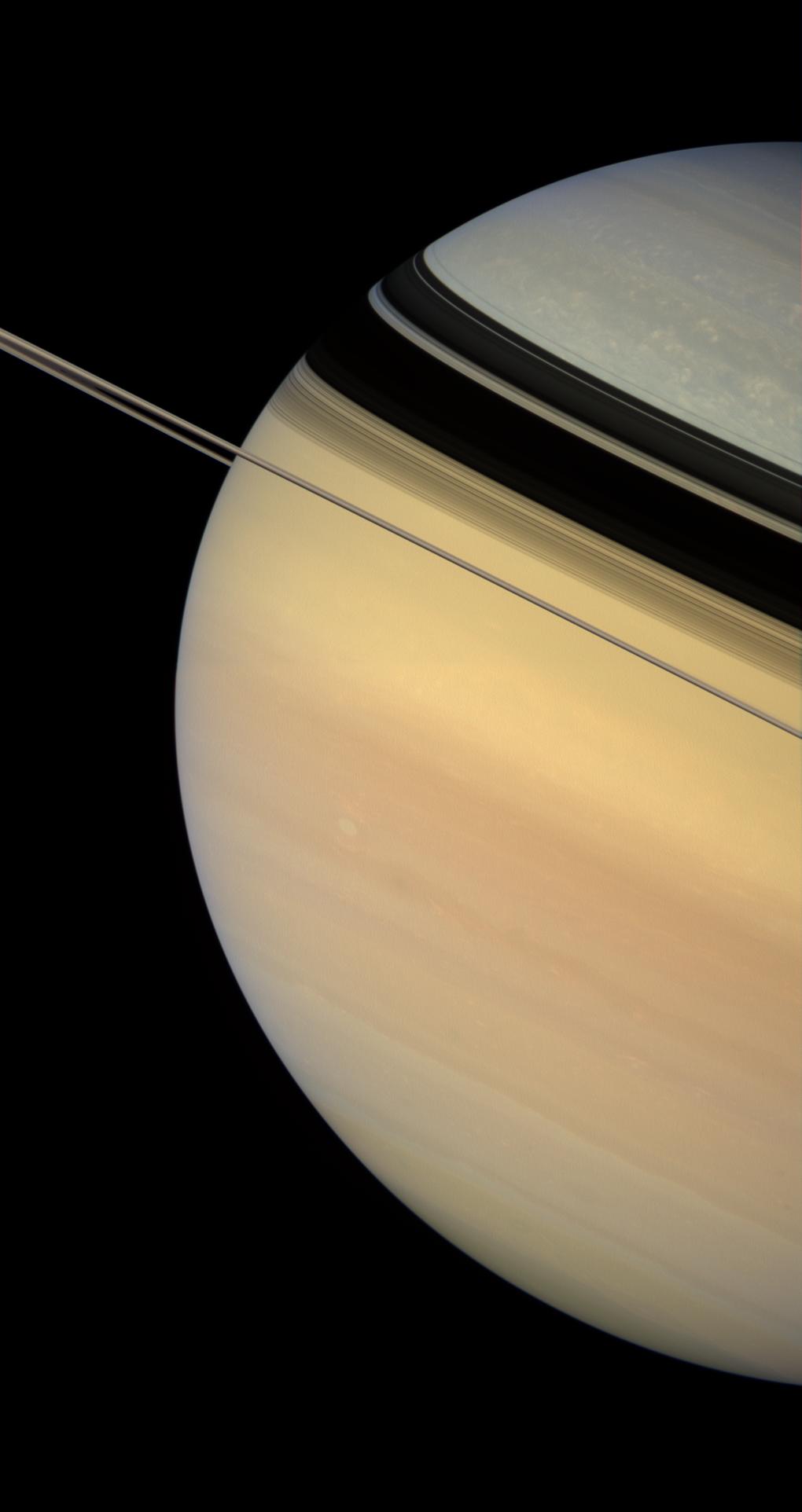Tourniquet Shadows

| PIA Number | PIA08360 |
|---|---|
| Language |
|
Dark and sharply defined ring shadows appear to constrict the flow of color from Saturn's warmly hued south to the bluish northern latitudes.
Scientists studying Saturn are not yet sure about the precise cause of the color change from north to south. NASA Voyager spacecraft flybys witnessed a more evenly painted planet in the early 1980s, when Saturn was closer to equinox. However, the bluish color was readily apparent upon Cassini's approach to the planet in late 2003, when Saturn was just coming out of its northern hemisphere winter. Scientists have speculated that the color is due to seasonal effects on the atmosphere.
Aside from the color differences, the cloud morphology is quite different in the polar regions compared to the mid-latitudes. Bright, isolated clouds dot the high latitudes, while Saturn's middle is characterized by flowing cloud bands and the occasional bright or dark vortex.
This view looks toward the lit side of the rings from about half a degree below the ring plane.
Images taken using red, green and blue spectral filters were combined to create this natural-color view. The images were obtained with the Cassini spacecraft wide-angle camera on Feb. 4, 2007, at a distance of approximately 1.2 million kilometers (700,000 miles) from Saturn. Image scale is 67 kilometers (42 miles) per pixel.
The Cassini-Huygens mission is a cooperative project of NASA, the European Space Agency and the Italian Space Agency. The Jet Propulsion Laboratory, a division of the California Institute of Technology in Pasadena, manages the mission for NASA's Science Mission Directorate, Washington, D.C. The Cassini orbiter and its two onboard cameras were designed, developed and assembled at JPL. The imaging operations center is based at the Space Science Institute in Boulder, Colo.
For more information about the Cassini-Huygens mission visit http://saturn.jpl.nasa.gov . The Cassini imaging team homepage is at http://ciclops.org .
Credit: NASA/JPL/Space Science Institute
